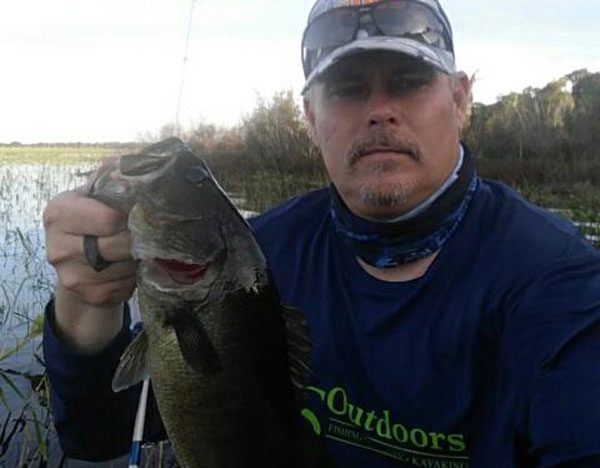by Robert Farabee
Wind is as common as rain here in the sunshine state. Especially in central Florida where coastal breezes can collide. This can be a problem for kayakers who aren’t prepared or experienced for the windy conditions.
First you need to know your limitations. Here are some basic rules I use when getting ready for a kayak trip on a windy day. Learn the basic terminology used by mariners. ‘Light Air’ consist of winds of 1-3 knots which result in very safe conditions. A ‘Gentle Breeze’ consists of winds of 7-10 knots; small whitecaps will begin to appear that may become challenging for novice kayakers. A ‘Moderate Breeze’ consists of winds of 11-16 knots; this produces conditions approaching the upper limit for inexperienced paddlers. A ‘Fresh Breeze’ consists of winds of 17-21 knots; quite challenging in a kayak and solid experience is required. A ‘Strong Breeze’ consists of winds of 22-27 knots; paddling is very difficult, kayakers should be experienced, geared up for immersion and paddle with other experienced kayakers. Remember that 1 knot equals 1.15 mph.
Here in central Florida most of the lakes are small and relatively shallow. This makes them highly susceptible to rapidly changing conditions especially during the summer thunderstorm season. When venturing out onto the water you should always key an eye to the sky for approaching weather.
One feature that makes paddling in windy conditions much easier is feathering. The individual blades of the kayak paddles are set perpendicular to each other, or close to perpendicular, so when the blade that is not propelling the boat is raised in the air, it will cut through the air rather than act as a sail against it. This makes a person’s paddle stroke quicker and less taxing on the arm. Some higher end paddles feature shafts that rotate to allow for an adjustable feather; the paddler can then tailor the feather to his or her paddle stroke. Most paddles that have this feature will be two piece paddles with several holes for adjusting the feathering.
Paddling in high wind is like paddling on long trips. Your paddle shaft can make a big difference in your stroke. The shaft of kayak paddles can vary in shape, materials, and length. The most common shape for a paddle shaft is the straight shaft, though it can be tough on the wrists during longer paddling trips. Bent shafts feature strategically placed bends that make gripping the shaft easier on the wrists, though this design can shorten a paddler’s stroke. Some designs work to counteract this shortening by carefully designing the location of the bends, though the overall results of this design are up for debate. The shaft materials can also have an impact both on wrist comfort and paddle stroke effectiveness; carbon, for example, is exceptionally rigid, which makes for a strong paddle stroke but increased strain on the wrists. Plastic will flex more, which means one’s paddle stroke is likely to be less efficient but the wrists may be more comfortable.
Finally, plan your trip to start out facing into the wind while you are strong and fresh. This will also help you when you return and your back is to the wind. You may also consider a small umbrella to help as a sail when on open water or when you just want to relax and get out of the sun.
So, take the time, find yourself, and go yaking.
Rent or buy but give it a try. You’ll find many manufacturers and models of kayaks to choose from for the type of experience you’re looking for, from angling to tandem models you can find it at GS Outdoors located at 5621 U.S.27 Hwy 27 N. Sebring Fl. 33870 or follow us on Facebook.
Robert Farabee Pro Staff GS Outdoors reelitinrob@gmail.com
